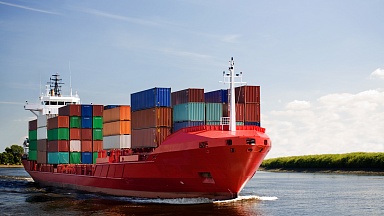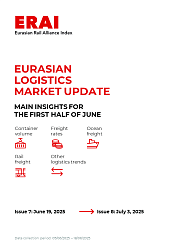Demand Outlook
Demand remains strong due to early order volumes, historically peaking in August in US ports. The Trans-Pacific (TP) route experiences heightened demand from concerns about potential changes in customs regulations post-US elections. Additionally, wage negotiations among US East Coast port workers in September are anticipated to impact operations.
Capacity Outlook
The ongoing conflict in the Red Sea has caused a 17% rise in capacity on the Asia-Europe route. However, effective capacity increased only by 2% due to longer detours around Africa. Port congestion has hit an 18-month high, with further escalation expected from strikes at German ports leading to omitted port calls and blanked sailings. Equipment issues persist, notably in Asia.
Freight Rates
Spot rates out of China continue to rise, marking the 11th consecutive week of increase according to the Shanghai Containerized Freight Index (SCFI). Spot rates from Shanghai to California are nearly five times higher than the previous year. A weekly Peak Season Surcharge (PSS) on all Asia outbound trades has been introduced, and there is a steep increase in secondary trades like intra-Asia.
Regulatory and Geopolitical Factors
The Suez Canal Authority has extended discounts for containerships on specific long-distance trades to counter a decline in vessel transits and revenues. The Panama Canal Authority has raised its maximum authorized draft to 13.7 meters, allowing the canal to accommodate thirty-two ships per day.
Economic Recovery and Geopolitical Tensions
The GDP outlook from the IMF is modest amidst economic uncertainties, yet demand for ocean freight remains strong. Conflicts in the Middle East and Ukraine continue to cause route diversions and increased operational costs.
Capacity and Equipment Management
Carriers are effectively managing capacity, with nominal capacity development showing a significant rise due to new deliveries. The orderbook by carrier highlights substantial additions, with major players like CMA CGM, Maersk Line (ML), and COSCO leading the charge. Effective capacity, however, faces reductions due to delays, congestion, and strategic routing decisions.
Market Developments on Key Regional Tradelanes
Asia outbound lanes continue to show strong demand, expected to persist for at least the next three months.
Schedule Reliability
Global schedule reliability has improved by 3.8 percentage points, reaching 55.8%, the highest for the year. However, congestion remains a significant issue, particularly at Southeast Asian hub ports like Singapore, Port Klang, and Tanjung Pelepas.
Spot Rates and Forecast
Spot rates from China on major East-West trade lanes continue to rise amid strong demand, tight capacity, and port congestion. DHL expects this trend to persist into Q3 before leveling out. World Container Index (WCI) and Shanghai Containerized Freight Index (SCFI) data indicate a sharp increase in spot rates across key trades, including Shanghai to Los Angeles and Shanghai to New York.
The ocean freight market in 2024 is characterized by robust demand, particularly on Asia outbound lanes, strategic capacity management by carriers, and rising operational costs due to new environmental regulations and geopolitical tensions. Rates continue to climb amid tight capacity and port congestion, with expectations for the trend to stabilize later in the year.
Copyright © DHL International GmbH. All Rights Reserved.



